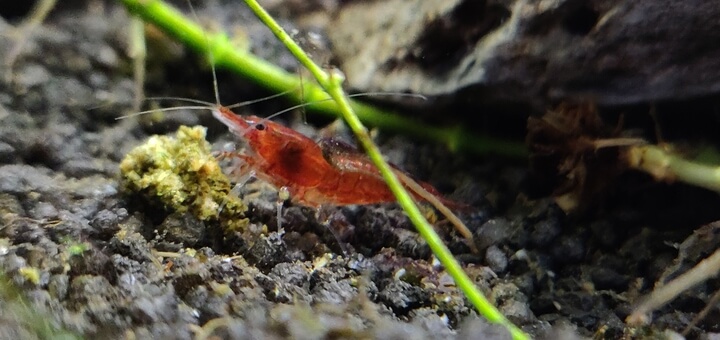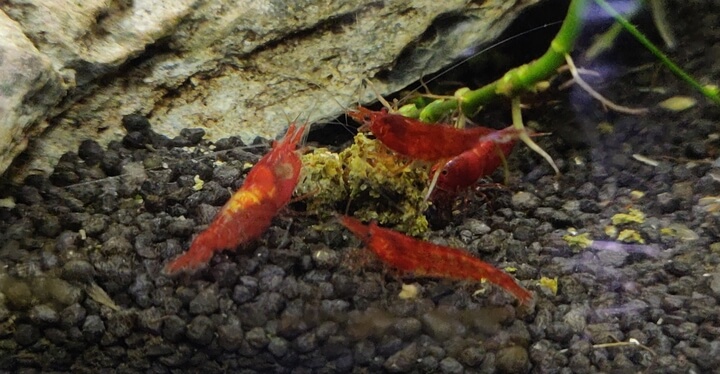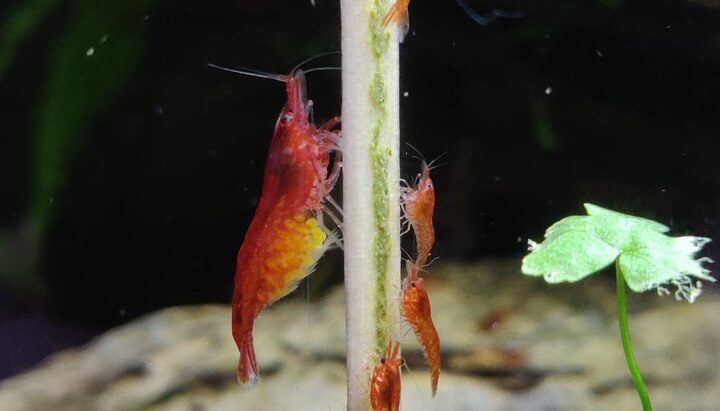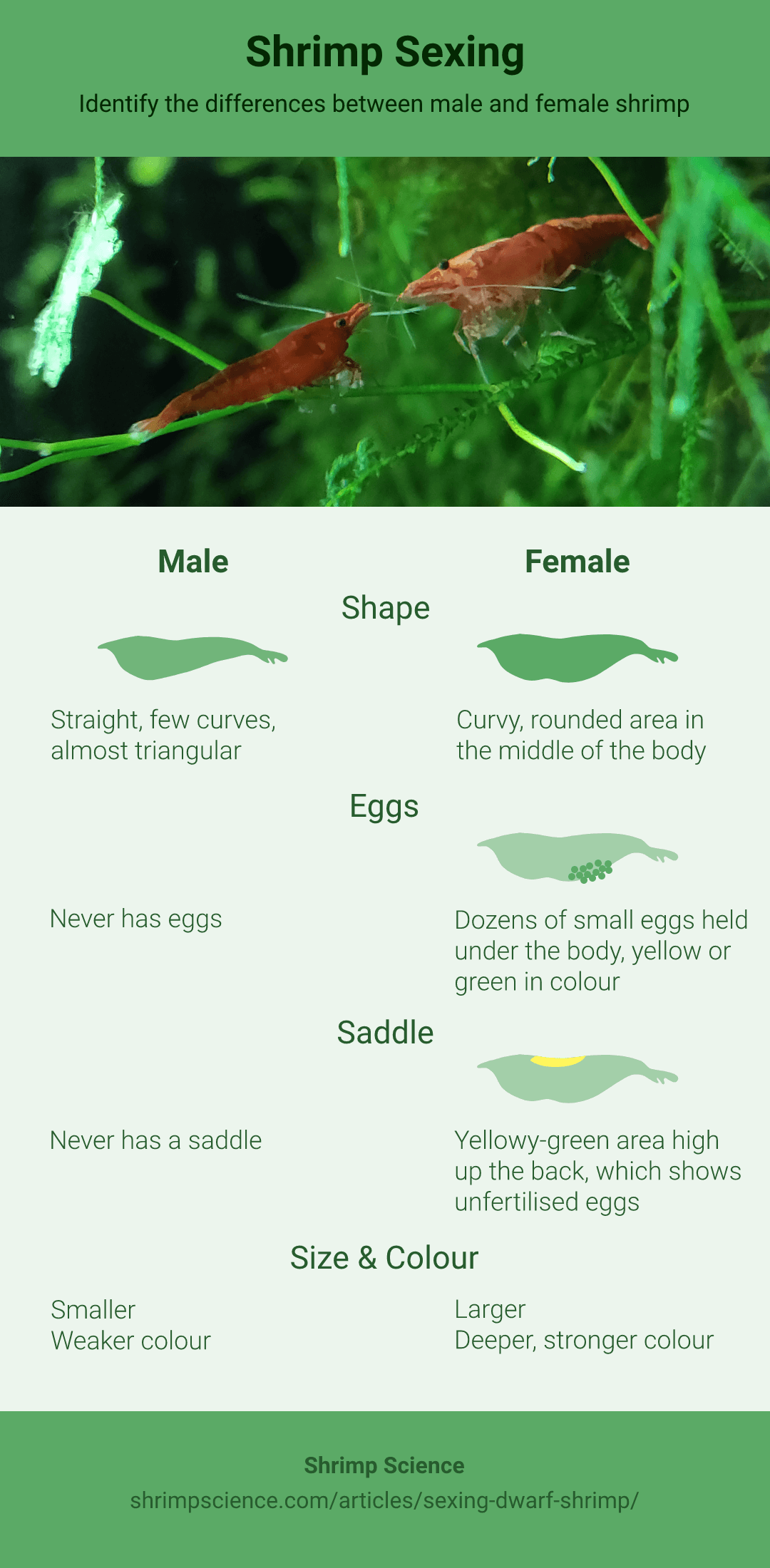Cherry shrimp and bee shrimp can look pretty similar when you first start keeping them, but it’s useful to know what your male to female ratio is when trying to breed them. Fortunately there are a few ways to identify their sex with some being fairly obvious and others quite vague, combining the signs you see will help improve your accuracy.
A different gender Red Cherry shrimp is shown in each of the two photos below, and after reading this article you should know how to easily tell which shrimp is male and female.


Abdomen shape
The shape of their abdomen is one of the most common visual hints of their sex.
Females have a smooth, curved underside of their abdomen, which gives their tails a shape similar to the letter D rotated 90 degrees when viewed from the side. The reason for this shape is so that they can hold their eggs safely against their body until they’re ready to hatch. For the same reason you will often the pleopods (swimmerets) more pronounced on females too.
Males instead have a flatter, almost straight underside to their abdomen, looking more triangular and symmetrical with their back’s curve.
Saddle
Saddles are a feature you will only see on females, so if you spot one it’s a very good sign you’re looking at a female.
A saddle is a yellow or green spot high up their back, just behind their head, consisting of unfertilised eggs. This signifies that the shrimp has reached sexual maturity and is ready to mate.
There is a saddled female on the left side of the photo below. In this case the saddle is very obvious but in other shrimps it might be smaller and less contrasting, especially in those with more opaque shells.

Eggs
Just like with the saddle, only females will have eggs under their body, making it a dead giveaway when trying to identify a female.
The yellow-green eggs will be held under their bodies with their pleopods, and they’ll be occasionally fanned to keep the eggs clean and oxygenated. It’s completely obvious in this photo that the female is holding eggs, but with an opaque yellow shrimp for example, it could be a lot harder to spot. This is when it can be useful to check for fanning females, try and see if there are any eggs amongst their swimmerets.

Size
Similar to a lot of other animal species, females tend to be slightly larger than the males. Due to being dwarf shrimp, the difference in size isn’t always totally obvious to the naked eye, especially if they’re not right next to each other. However, this sign is still useful when combined with the other suggestions when trying to determine what sex a shrimp might be.
Colour
Another less reliable sign, when used on its own, is the colour of the shrimp.
Females will usually have a deeper, more vibrant and opaque colour to them. Whereas males will usually appear as slightly lower grade with speckles of colour on their shell, or being slightly more translucent.
This test should only really be used alongside the other suggestions because different grades of shrimp will have different colours and could lead to false positives.
Infographic
Use this helpful shrimp sexing infographic to help you remember the key differences.

Summary
To summarise how to correctly sex a dwarf shrimp:
- Do you see eggs? Female.
- Do you see a saddle? Female.
- Is the underside of their abdomen curvy? Probably female.
- Is the underside of their abdomen straight/triangular? Probably male.
If you wanted to know the genders of the shrimp in the introduction’s photos the answer is: the first photo is of a male, and the second photo is a female.
